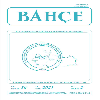İKLİM DEĞİŞİKLİĞİNİN TÜRKİYE SALIX TÜR DAĞILIMINA ETKİLERİ
CLIMATE CHANGE EFFECTS ON THE DISTRIBUTION OF TURKISH SALIX SPECIES
___
- 1. Acar, P., 2017. Molecular phylogenetics of Turkish Salix L. species (PhD thesis). Middle East Technical University, Ankara, Turkey.
- 2. Akgül, S., K. Tunçtaner, 2011. Selection of suitable willow clones for biomass production and growing techniques in Turkey, in: Tercer Congreso Internacional de Salicáceas en Argentina, Neuquén, Argentina.
- 3. Creutzig, F., N.H. Ravindranath, G. Berndes, S., Bolwig, R., Bright, F. Cherubini, H. Chum, E. Corbera, M. Delucchi, A. Faaij, J. Fargione, H. Haberl, G. Heath, O. Lucon, R. Plevin, A. Popp, C. Robledo-Abad, S. Rose, P. Smith, A. Stromman, S. Suh, O. Maser, 2015. Bioenergy and climate change mitigation: an assessment. GCB Bioenergy 7:916-944.
- 4. Degirmenci, F.O., P. Acar, Z. Kaya, 2019. Consequences of habitat fragmentation on genetic diversity and structure of Salix alba L. populations in two major river systems of Turkey. Tree Genet Genomes 15:59.
- 5. Demircan, M., H. Gürkan, O. Eskioğlu, H. Arabacı, M. Coşkun, 2017. Climate change projections for Turkey: Three models and two scenarios. Turkish Journal of Water Science and Management, 1(1):22-43.
- 6. Eriksson, T., T. Johansson, 2006. Effects of rotation period on biomass production and atmospheric CO₂ emissions from broadleaved stands growing on abandoned farmland. Silva Fennica, 40:603e13.
- 7. Evlard, A., P. Druart, G. Collinet, 2014. Using Salix spp. in phyto stabilization of metal pollution in soils: an example of phytoremediation appropriate to the brownfields of Wallonia. Poster in: 19. National Symposium on Applied Biological Sciences. Gembloux. Belgium.
- 8. Fujimura, K.E., K.N. Egger, G.H.R. Henry, 2008. The effect of experimental warming on the root-associated fungal community of Salix arctica. The ISME Journal, 2, 105-114.
- 9. IPCC, 2001. Third assessment report, the scientific basis. Intergovernmental panel on Climate Change, Cambridge University Press.
- 10. IPCC, 2013. Definition of terms used within the DDC Pages, (http://www.ipcc-data.org/ guidelines/pages/definitions.html; Retrieved: November 2019).
- 11. Kaya, Z., D.J. Raynal, 2001. Biodiversity and conservation of Turkish forest. Biol. Conserv. 97(2): 131-141.
- 12. Mahdi, J.G., A.J. Mahdi, I.D. Bowen, 2006. The historical analysis of aspirin discovery, its relation to the willow tree and antiproliferative and anticancer potential. Cell Proliferation Journal (Cell Prolif.), 39:147-155.
- 13. Nathaniel, E., T.G. Seavy, H. Gregory, F. Golet, 2009. Why climate change makes riparian restoration more important than ever: recommendations for practice and research. Ecological Restoration 27(3).
- 14. Phillips, S.J., M. Dudik, R.E. Schapire, 2004. A maximum entropy approach to species distribution modeling. Twenty-first International Conference on Machine Learning -ICML 04.
- 15. Pulford, I.D., C. Watson, 2003. Phytoremediation of heavy metal-contaminated land by trees a review. Elsevier, Environment International, 529-540.
- 16. R Core Team, 2018. R: A language and environment for statistical computing (https:// www.r-project.org; Retrieved: November 2019).
- 17. Serrat-Capdevila, A., J.B. Valde’s, J.G. Pe'rez, K. Baird, L.J. Mata, 2007. Thomas Maddock, Modeling climate change impacts and uncertainty on the hydrology of a riparian system: The San Pedro Basin, Arizona/Sonora. Journal of Hydrology, 347:48-66.
- 18. Silvola, J., U. Ahiholm, 1993. Copenhagen 1993 Effects of CO₂ concentration and nutrient status on growth, growth rhythm and biomass partitioning in a willow, Salix phylicifolia. OIKOS 67: 227-234.
- 19. Skvortsov, A.K., 1999. Willows of Russia and adjacent countries: Taxonomical and Geographical Revision (transl from: Skvortsov AK (1968) Willows of the USSR: Taxonomic and Geographic Revision. Nauka, Moscow), ed: Zinovjev, A.G., Argus, G.W., Tahvanainen, J., Roininen, H., Joensuu University, Joensuu, 307.
- 20. Şen, Ö.L., 2013. A holistic view of climate change and its impacts in Turkey, Istanbul: Istanbul Policy Center Sabanci University Stiftung Mercator Initiative, (http://ipc.sabanci univ.edu/en/wp-content/uploads/2012/09/a-holistic-view-of-climate-change-and-its-impacts-in-turkey.pdf).
- 21. Tegelberg, R., R. Julkunen-Tiitto, 2001. Quantitative changes in secondary metabolites of dark-leaved willow (Salix myrsinifolia) exposed to enhanced Ultraviolet-B radiation. Physiologia Plantarum 113:541-547.
- 22. Terzioğlu, S., K. Coşkunçelebi, B. Serdar, 2007. Contribution to the description of an endemic Turkish Salix species, Plant Biosystems, 141(1):82-85.
- 23. Usta Baykal, N., 2017. Determining potential niche competition regions between Kazdagı fir (Abies nordmanniana subsp. equi-trojani) & Anatolian black pine (Pinus nigra subsp. pallasiana) and conservatıon priority areas under climate change by using maxent algorithm (Master thesis). Middle East Technical University, Ankara, Turkey.
- 24. Vermerris, W., 2008. Genetic improvement of bioenergy crops. Springer, 347-362.
- 25. Wu, J., T. Nyman, D. Wang, G.W. Argus, Y. Yang, J. Chen, 2015. Phylogeny of Salix subgenus Salix s.l. (Salicaceae): delimitation biogeography and reticulate evolution. BMC Evolutionary Biology, 15:31
- 26. Zielinski, J., D. Tomaszevski, 2007. Salix anatolica (Salicaceae), a new species from Turkey. Annual Botany, Fennici, 45:386-388.
- ISSN: 1300-8943
- Yayın Aralığı: Yılda 2 Sayı
- Başlangıç: 1968
- Yayıncı: Atatürk Bahçe Kültürleri Merkez Araştırma Enstitüsü
VITICULTURE INDUSTRY OF ATU GAGAUZIA AND ITS DEVELOPMENT IN MODERN CONDITIONS
Ertan Sait KURTAR, Önder TÜRKMEN, Musa SEYMEN, Ayşe Nur ÇETİN
SSR MARKÖR SİTEMİ KULLANARAK KAVUNLARDA SAFLIK DÜZEYLERİNİN TAHMİN EDİLMESİ
Önder TÜRKMEN, Necibe KAYAK, Ali Tevfik UNCU
KAOLİN UYGULAMASININ BAZI CEVİZ ÇEŞİTLERİNDE ANTRAKNOZ VE İÇ KURDU OLUŞUMUNA ETKİSİ
Oğuzhan ÇALIŞKAN, Safder BAYAZIT, Hilal TEFEK
CEVİZ TOHUMLARINDAN ÇÖĞÜR ELDESİ
Tuba BAK, Turan KARADENİZ, Gülşah ÇATMADIM, Muharrem ARSLAN
KONYA KOŞULLARINDA AYÇİÇEĞİNDE SULAMANIN BİOKÜTLE VE HASAT İNDEKSİNE ETKİLERİ
Mehmet Ali DÜNDAR, Arzu GÜNDÜZ, Oğuz GÜNDÜZ, Osman ÇAĞIRGAN
‘OWARİ SATSUMA’ MANDARİN ÇEŞİDİNİN SOĞUKTA MUHAFAZASINA SODYUM METABİSÜLFİT UYGULAMALARININ ETKİLERİ
Ahmet Erhan ÖZDEMİR, Safder BAYAZIT, Mustafa DİDİN, Najd ALAKRAA, Hasan Kaan GÜRSES, Mehmet Kazım AKI
